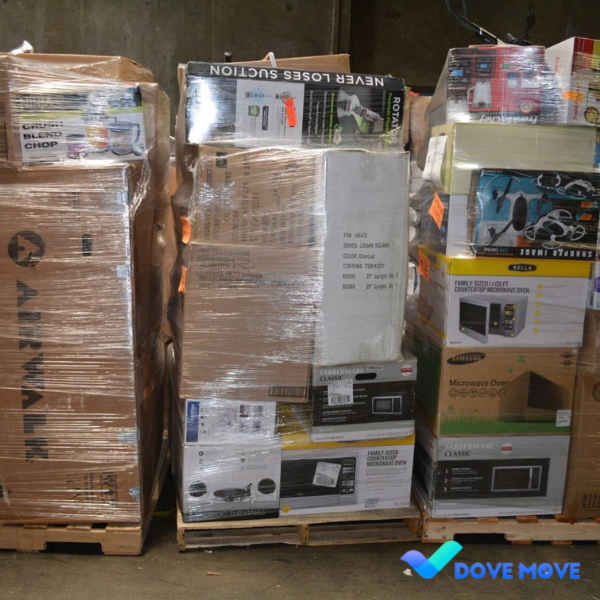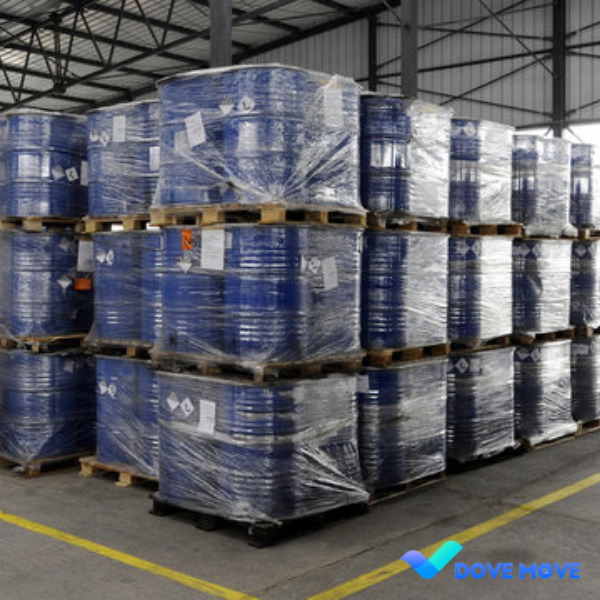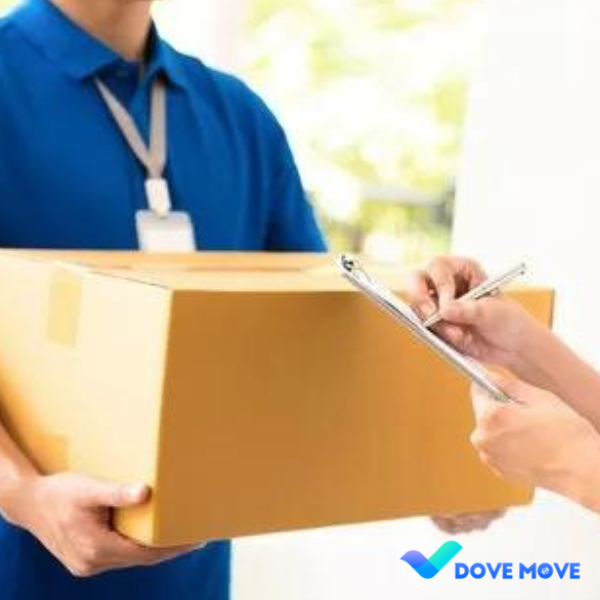Home » Our Services » Shipping Services » LCL (Less Than Container Load)
LCL Shipment from China
with the best shipping rates from China
Dove Move Provides the best shipping services at very affordable rates. Key points of our LCL freight forwarding from China are as follow:
- Dove Move provides cost-effective solutions for LCL shipments from China, ensuring competitive pricing to optimize your shipping expenses.
- Benefit from Dove Move’s specialized knowledge and experience in LCL logistics, ensuring a smooth and efficient handling of smaller cargo volumes.
- Dove Move offers tailored solutions for LCL shipments, allowing you to choose options that best fit your cargo size, destination, and specific requirements.
- Take advantage of Dove Move’s extensive global network, facilitating LCL shipments from China to various destinations with reliable and well-connected logistics services.
- Dove Move provides end-to-end support, from cargo pickup in China to delivery at the destination, offering 24/7 assistance and ensuring a seamless LCL shipping experience.
Ask for LCL Shipment Rate
Get Connected!

LCL General Merchandise
- LCL General Merchandise encompasses a wide variety of products, ranging from electronics and apparel to household items. These goods are often consolidated from multiple shippers into a single container for cost-effective shipping.
- LCL (Less than Container Load) allows businesses to share container space, reducing shipping costs for smaller quantities of merchandise. It is a cost-effective option for companies with smaller inventory requirements.
- LCL General Merchandise provides flexibility in shipping smaller quantities without the need to fill an entire container. This flexibility is beneficial for businesses with varying inventory sizes or those testing new markets.
- As with any international shipping, LCL General Merchandise requires proper documentation and customs clearance. Businesses need to adhere to import/export regulations and ensure accurate paperwork for smooth customs processing.
- Utilizing technology and logistics services, LCL shipments offer tracking options, providing visibility into the location and status of the merchandise during transit. This transparency is crucial for effective supply chain management.

LCL Chemical/Hazardous Goods
- LCL shipments of chemical or hazardous goods require specialized handling due to safety and regulatory considerations. Proper labeling and packaging compliant with international standards are essential.
- Shipping hazardous materials involves strict adherence to international and local regulations. Compliance with laws such as the International Maritime Dangerous Goods (IMDG) Code is crucial to ensure the safe transport of these goods.
- Accurate and comprehensive documentation is vital for LCL shipments of chemical or hazardous goods. This includes Material Safety Data Sheets (MSDS) and other required paperwork to facilitate customs clearance and regulatory compliance.
- To prevent cross-contamination and ensure safety, LCL shipments of chemical or hazardous goods may involve segregation within the container. This is essential to minimize risks associated with incompatible materials.
- Given the potential risks, it’s imperative to have a well-defined emergency response plan in place for LCL shipments of chemical or hazardous goods. This includes communication protocols and coordination with relevant authorities.

LCL Door to Door Delivery
- LCL Door to Door Delivery provides a comprehensive service, handling logistics from the point of origin to the final destination. This includes pickup, transportation, customs clearance, and delivery to the recipient’s doorstep.
- Shippers benefit from the convenience of a single-service provider managing the entire shipping process. This simplifies logistics coordination and reduces the burden on businesses, especially those without extensive shipping expertise.
- Door to Door Delivery services often include real-time tracking, allowing both shippers and recipients to monitor the progress of the shipment. This transparency enhances communication and reduces uncertainties in delivery timelines.
- Managing customs clearance can be complex. LCL Door to Door Delivery services typically include assistance with customs documentation and procedures, ensuring compliance with import/export regulations.
- The service extends to the last mile, ensuring that the shipment reaches its final destination, whether it’s a business or residential address. This is particularly advantageous for e-commerce businesses and individual consumers.
LCL Shipment From China: The Definitive Guide
Welcome to the definitive guide on Less than Container Load (LCL) shipments from China. If you’re navigating the complexities of international shipping, especially from the manufacturing powerhouse that is China, understanding LCL shipments is crucial. In this comprehensive guide, we’ll unravel the advantages, challenges, and everything in between to ensure you embark on a successful LCL journey.
1. Introduction
A. Definition of LCL shipment
LCL, or Less than Container Load, is a shipping method where multiple small shipments from different shippers are consolidated into a single container. This cost-effective approach is particularly beneficial for small to medium-sized businesses.
B. Importance of understanding LCL shipments from China
With China being a major player in global trade, mastering the intricacies of LCL shipments from this economic giant is essential for businesses seeking efficient and affordable shipping solutions.
2. Advantages of LCL Shipment
A. Cost-effectiveness
LCL shipments allow businesses to share container space, significantly reducing shipping costs compared to Full Container Load (FCL) options. This makes LCL an attractive choice for companies with smaller quantities of goods.
B. Flexibility in cargo volume
LCL provides flexibility in shipping smaller quantities, allowing businesses to adapt to market demands without the need for large inventory commitments. This agility can be a game-changer in dynamic industries.
C. Reduced risk
By sharing container space with other shipments, the risk is distributed. This can be advantageous in terms of cost sharing and risk management, especially for businesses with limited cargo.
3. Challenges in LCL Shipment
A. Longer transit times
While cost-effective, LCL shipments may have longer transit times due to the need to consolidate and deconsolidate cargo. Careful planning is crucial to mitigate delays.
B. Potential for damage
Sharing container space poses a risk of damage to goods during loading and unloading. Proper packaging and securing measures are vital to safeguard your cargo.
C. Customs clearance complexities
LCL shipments involve multiple consignees, leading to increased documentation and customs clearance complexities. Ensuring compliance is paramount to avoid delays and penalties.
4. Steps in Preparing LCL Shipment from China
A. Choosing a reliable freight forwarder
Selecting a trustworthy freight forwarder with expertise in LCL shipments is the first step. Look for a partner with a proven track record and transparent communication.
B. Proper packaging and labeling
To minimize the risk of damage, ensure your goods are securely packaged and labeled according to international shipping standards. This step is crucial for the safety of your cargo.
C. Documentation requirements
Understanding and fulfilling documentation requirements is critical. Work closely with your freight forwarder to ensure all necessary paperwork is in order for a smooth customs clearance process.
5. Understanding LCL Shipping Costs
A. Factors influencing LCL shipping costs
Various factors, such as cargo volume, weight, and destination, impact LCL shipping costs. Familiarize yourself with these factors to optimize your budget.
B. Tips for cost optimization
Implementing strategies like bulk shipments, proper planning, and negotiating with carriers can help optimize LCL shipping costs without compromising service quality.
6. LCL vs. FCL: A Comparative Analysis
A. Definition of FCL
Full Container Load (FCL) involves shipping an entire container for one consignee’s cargo. This method has its advantages and drawbacks.
B. Pros and cons of FCL shipments
Explore the pros and cons of FCL shipments to make an informed decision based on your business’s unique needs and shipping requirements.
C. Choosing between LCL and FCL
Weigh the benefits and drawbacks of LCL and FCL shipments to determine which option aligns better with your cargo volume, budget, and timeline.
7. Popular LCL Shipping Routes from China
A. Overview of key shipping routes
Understand the major shipping routes from China, considering factors like transit time, cost, and reliability when choosing the best route for your LCL shipment.
B. Factors affecting route selection
From geographical considerations to carrier options, delve into the factors influencing the selection of LCL shipping routes to optimize your supply chain.
8. Customs Regulations and Compliance
A. Importance of complying with customs regulations
Navigating customs regulations is a critical aspect of international shipping. Learn why compliance is crucial and how it contributes to smooth LCL shipments.
B. Common customs issues and solutions
Anticipate and address common customs issues to avoid delays and complications. Proactive measures can significantly enhance the efficiency of your LCL shipments.
9. Tracking and Monitoring LCL Shipments
A. Tools for real-time tracking
Explore advanced tracking tools and technologies to monitor your LCL shipments in real-time. Enhance visibility and responsiveness in your supply chain.
B. Ensuring transparency in the supply chain
Transparency is key in international shipping. Establish transparent communication channels with your freight forwarder and consignees for a streamlined LCL shipping experience.
10. Future Trends in LCL Shipping
A. Technological advancements
Explore emerging technologies shaping the future of LCL shipping. From blockchain to IoT, stay informed about innovations that can revolutionize your supply chain.
B. Environmental sustainability initiatives
With a growing focus on sustainability, understand how the shipping industry is adapting to eco-friendly practices. Stay ahead by aligning your business with sustainable shipping trends.
11. Expert Tips for a Smooth LCL Shipment
A. Recommendations from industry experts
Glean insights from industry experts on how to navigate LCL shipments successfully. Benefit from their expertise to enhance the efficiency of your supply chain.
B. Best practices for hassle-free LCL shipments
Implement best practices recommended by experts to minimize challenges and ensure a seamless LCL shipping experience. Proactive measures can make a significant difference.
12. Conclusion
The transit time for LCL shipments varies based on factors like the shipping route and destination. On average, it can range from a few weeks to a month. While LCL shipments accommodate various types of goods, certain hazardous materials and oversized items may have restrictions. Consult with your freight forwarder to ensure compliance. Many freight forwarders offer real-time tracking for LCL shipments. Utilize tracking tools provided by your logistics partner for updated information on your cargo’s location.
Common documents include the commercial invoice, packing list, bill of lading, and any specific documentation required by the destination country. Work closely with your freight forwarder to ensure all necessary paperwork is prepared. Optimizing costs in LCL shipping involves strategic planning, negotiating with carriers, and leveraging economies of scale. Work closely with your logistics partner to identify cost-saving opportunities tailored to your business.
Are you want to learn more please visit our blog. Thanks
Our services include shipping services, route services, and no distance services. For any query please contact us. Thanks
Get Your Quote
Experience seamless shipping with Dove Move, your trusted freight forwarding partner. Don't wait any longer, take the first step towards hassle-free logistics. Click below to get your quote now!